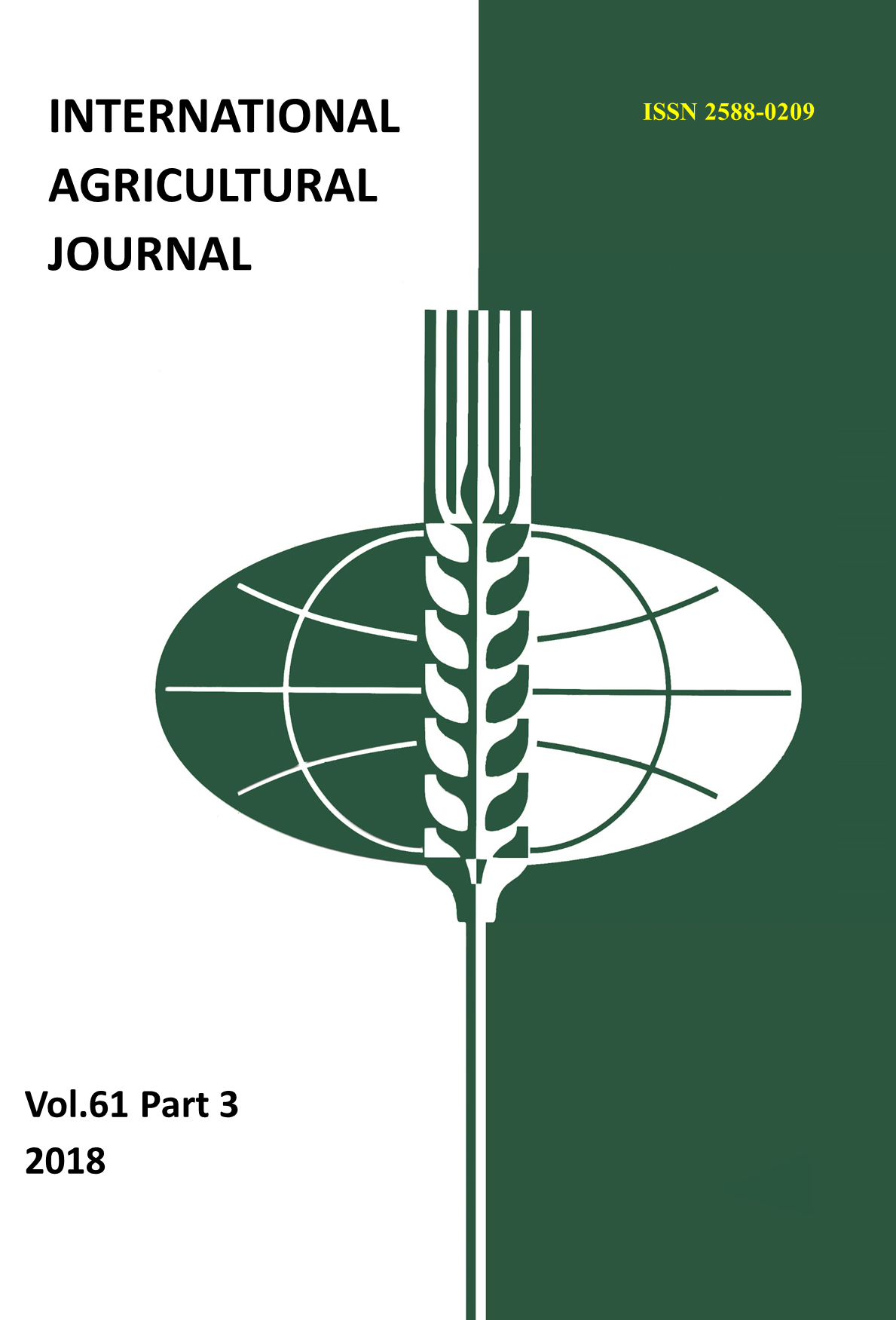MOISTURE CONTENT OF OATS IN DIFFERENT METHODS OF SOIL PROCESSING AND IRRIGATION TREATMENT ON THE
Main Article Content
Abstract
The article presents the results of field research on the moisture content of oats under various technologies of soil cultivation and vegetative and water recharge irrigation. The aim of the research is to study the effect of irrigation, resource-saving soil cultivation technology on the moisture regime, the fertility of permafrost soils and the biological productivity of oats. Field experiments on the influence of the irrigation regime on the yield of oats were carried out on the cryogenic meadow-chernozem loamy soils of the Khangalasskydistrict, according to the effect of resource-saving soil cultivation technology on soil fertility - in the frozen taiga-pale soils of the Megino-Kangalasskydistrict of the Central Yakutia.Laboratory studies were carried out on the basis of a laboratory of biochemistry and mass analysis using the NIR SCANNER mo LCE 4250 spectral analyzer. In the conditions of the cryaridextracontinental climate of the Central Yakutia, the yield of crops depends on agroclimatic factors, where the average annual hydrothermal coefficient of the growing season is 0.90. The entire territory of the republic is included in the zone of continuous distribution of permafrost. The soil processes ensuring the growth and development of the vegetation cover are seasonal in nature and develop in the thawing soil of the summer, which is an active layer of permafrost landscapes.Low temperatures of the active layer interfere with the normal development of microbiological and biochemical processes in the soil. The studies included soil cultivation according to the traditional (plow processing) and resource-saving (multifunctional tillage aggregates) technologies, irrigation was carried out according to the main phases of plant development with the norm of 900 cubic meters per 1 hectare of the sowing area during the vegetation period and late-spring water-charging irrigation with the norm of 700 cubic meters per hectare.The efficiency of irrigation is established, which ensures an increase in the yield of green mass of oats by 20-30%. Resource-saving soil cultivation technology contributes to an increase in the supply of productive moisture by 15.6%, a decrease in soil density by 4.2% and an increase in the yield of fodder crops. To improve the agrophysical properties of permafrost soils and increase the yield of fodder crops, it is recommended to use multifunctional soil cultivators and to irrigate oats on green mass.
Article Details
References
1. Shashko,D.I. Climatic conditions of agriculture in Central Yakutia.М.: Publishing house of the USSR AS, 1961. – 264 p.
2. Desyatkin,R.V., Okoneshnikova,М.V., Desyatkin,А.R. Soils of Yakutia. Yakutsk, 2009. – 62 p.
3. Ivanova,L.S. Adaptive-landscape systems of agriculture of the Leno-Amginsky interfluve.Novosibirsk, 2004. – 131p.
4. Savvinov, D.D. Soils of Yakutia. Problems of rational use of soil resources, their melioration and protection.Yakutsk, 1989.P – 33.
5. Dospekhov, B.А. Methodology of field experience.М.:Kolos, 1978. – 416 p.
6. The system of agricultural production of the Republic of Sakha (Yakutia) for the period up to 2015.Yakutsk, 2009. – 315p.
7. Popov, N.Т., Savvinov, D.D., Maksimova, Kh.I.,and others. Resource-saving technology of processing of permafrost soils of Central Yakutia: Methodical grant. Yakut Scientific Research Institute of Agriculture.Yakutsk, 2014.
8. Elovskaya,L.G., Konorovsky, A.K.Zoning and amelioration of soils of Yakutia.Novosibirsk: Nauka, 1978.- P.17.
9. Savvinov,D.D. Applied Ecology of the North: Selected Works. Novosibirsk: Nauka, 2016. – 537 p.
10. Maksimova,Kh.I.,Nikolaeva,V.S., Pribylykh, E.I., Lykin, V.N. Fertility Improvements Methods of Frozen Soil in Central Yakutia of Russian Federation. International Journal of Plant and Soil Science. 2015. T.XXXX.№6(6). P.359-364.

